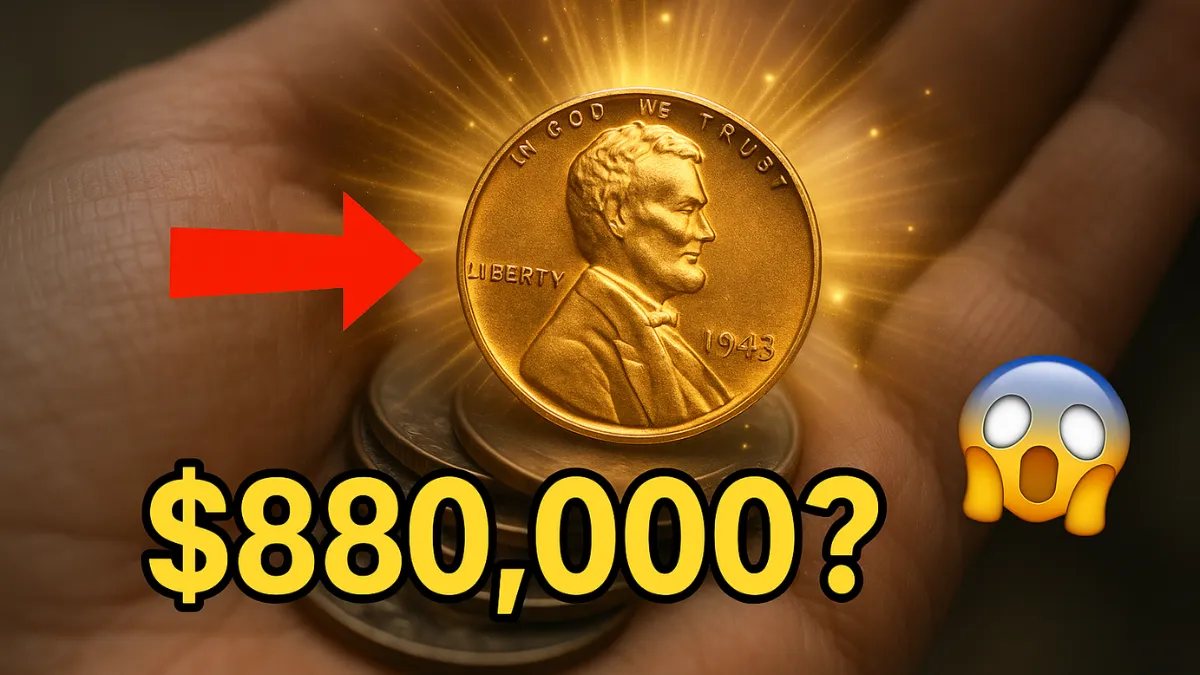In the realm of coin collecting, some of the most valuable treasures come in the most unexpected forms. The Lincoln Wheat Penny, a humble copper coin circulated between 1909 and 1958, has become one of the most intriguing and sought-after coins in American numismatic history.
While the vast majority of these coins hold only minimal monetary value today, select rare examples have fetched prices as high as $880,000—turning a common pocket change item into a potential goldmine.
A Historic Introduction
The Lincoln Wheat Penny made its debut in 1909 to commemorate the 100th anniversary of Abraham Lincoln’s birth. Designed by celebrated artist Victor David Brenner, the coin featured Lincoln’s profile on the front—a groundbreaking move, as it marked the first time a U.S. president appeared on a regular-issue coin.
The reverse side displayed a pair of wheat stalks, symbolizing prosperity and marking a departure from traditional coin motifs. Over nearly 50 years of production, these pennies accompanied Americans through major historical events, from global conflicts to societal change.
What Elevates a Penny’s Value?
Certain Lincoln Wheat Pennies have become extremely valuable due to a mix of rarity, minting mistakes, and preservation quality. Among the most notable examples is the 1943 Bronze Cent. During World War II, copper was reserved for wartime needs, and the U.S. Mint began producing pennies from zinc-coated steel.
Yet a few leftover copper blanks from 1942 were mistakenly used in 1943, resulting in a small number of bronze coins that are now considered legendary in the coin-collecting world.
How to Spot a Rare Find
Identifying a high-value Wheat Penny involves close inspection. Collectors look for rare mint marks—especially those from the San Francisco Mint (indicated by an “S”)—as well as key production years such as 1909, 1914, 1922, and 1943. Errors like double dies, off-center strikes, and unusual textures can also significantly enhance a coin’s worth.
Additionally, pennies from 1909 that include Brenner’s “VDB” initials on the reverse, particularly those from the San Francisco mint, are extremely prized. A coin’s condition—or “grade”—also plays a crucial role, with well-preserved, uncirculated specimens often commanding top-dollar prices.
The Importance of Authentication
Before any serious sale or purchase, professional grading is essential. Organizations like the Professional Coin Grading Service (PCGS) and the Numismatic Guaranty Company (NGC) specialize in verifying the authenticity and condition of rare coins.
Experts examine each piece under magnification, test its weight and composition, and compare it with authenticated examples. Once verified, the coin is sealed in a tamper-proof case and assigned a grade—giving collectors confidence in both its authenticity and market value.
More Than Just Money
While the potential to strike it rich certainly attracts many to coin collecting, the Lincoln Wheat Penny holds significance beyond its financial value.
Each coin is a miniature artifact of American history, possibly once used during a pivotal moment—whether tucked in a soldier’s pocket during wartime or spent by families weathering the Great Depression. This historical connection adds emotional and educational value, making these coins treasured pieces for collectors and history enthusiasts alike.
The Thrill of the Hunt
One of the most exciting aspects of collecting Lincoln Wheat Pennies is the real chance of stumbling upon a rare find in the most ordinary places. Unlike many collectible items locked away in private vaults or museums, these coins can still appear in everyday change, old piggy banks, or inherited coin jars.
Countless stories exist of lucky individuals discovering rare Wheat Pennies tucked away unnoticed for decades. This accessibility keeps the hobby engaging and inclusive for collectors at all levels.
A Legacy Worth Preserving
The Lincoln Wheat Penny stands as more than just a collector’s item—it’s a piece of America’s story. These coins capture the essence of different eras, from industrial growth to global conflicts, and embody a sense of national pride.
For collectors, the appeal lies not just in monetary gain but in preserving these small, tangible pieces of history. Whether worth a single cent or hundreds of thousands of dollars, each penny represents a chapter in the American narrative and serves as a tribute to enduring craftsmanship and heritage.
FAQs
What makes a Lincoln Wheat Penny valuable?
Rarity, mint errors, specific years, mint marks like “S,” and pristine condition can make a Wheat Penny significantly valuable.
Which Lincoln Wheat Penny is worth $880,000?
The 1943 Bronze Lincoln Wheat Penny is one of the rarest, and one specimen sold for $880,000 due to its accidental copper composition.
How can I tell if my penny is a 1943 bronze version?
Use a magnet—steel pennies will stick. A 1943 bronze penny won’t, and it weighs slightly more. Expert grading confirms authenticity.
Are all 1909 pennies valuable?
Not all, but the 1909-S VDB version is highly valuable due to its low mintage and the presence of the designer’s initials on the reverse.
Where should I get my Wheat Penny appraised?
Use trusted services like PCGS or NGC. They provide professional grading, authentication, and secure encapsulation for valuable coins.
